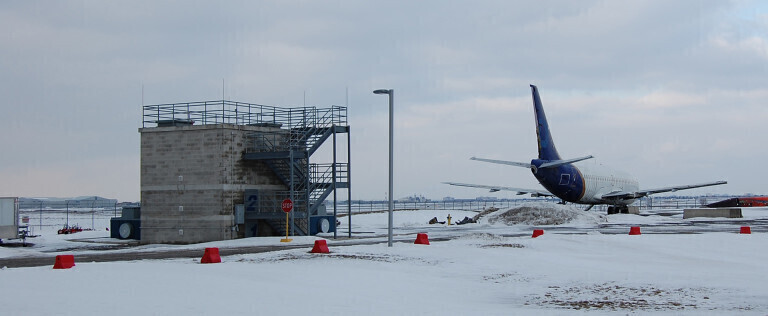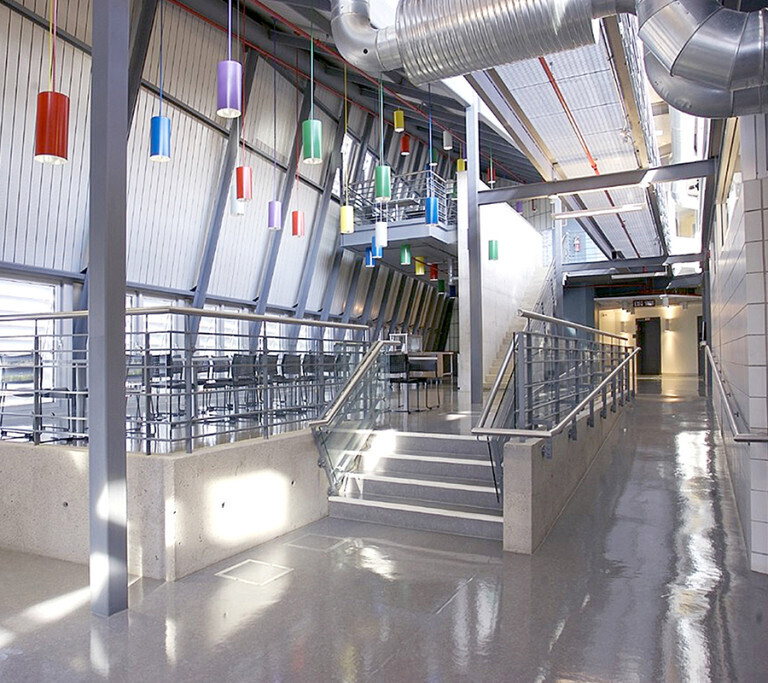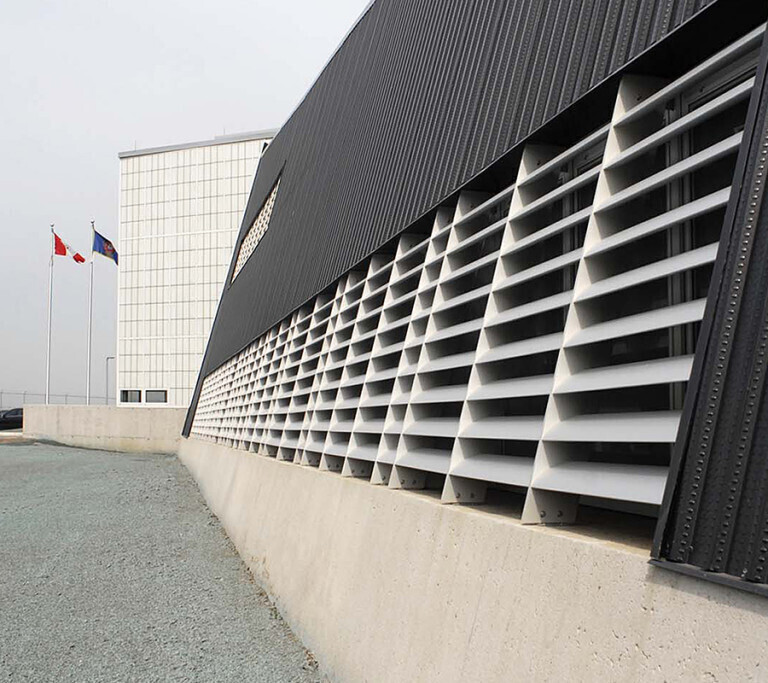
Airport’s New Fire Institute Highlights Green Building
The recently-opened 2,360-square-metre Fire and Emergency Services Training Institute at Lester B. Pearson International Airport has won a Green Buildings Award of Excellence from the Canadian Institute of Steel Construction (Ontario Region).
Owned by the Greater Toronto Airports Authority, the building was designed and built to achieve LEED silver certification and is the first LEED building at the airport. “We’re LEED compliant and we expect to obtain the rating shortly,” says Carol Kleinfeldt, principal, Kleinfeldt Mychajlowycz Architects Inc. Halsall Associates Limited was the structural engineer/LEED Consultant. General contractor was Aquicon Construction Co. Ltd. of Brampton. Bolton-based Benson Steel was steel fabricator and detailer, with steel erection by D.B. Structural Inc. of Whitby. Steel played a major role in development of a sustainable project by contributing to the building’s energy savings, plus reducing both a reliance on new construction materials and long haul material requirements, says Kleinfeldt.


Just some of the environmental and energy components of the building, comprised of a steel frame with precast floors and roof, include a slab or hollow core slab system that are connected to air-handling ducts — which constantly pumps clean fresh air into the building, plus a solar wall on the west side of the building and both green and white roofs. “It has achieved a 30 per cent reduction in energy use than a building built to the Model National Energy Code.” As well as its contribution to a sustainable project, steel played a major role architecturally and structurally, says Kleinfeldt. It was chosen as the dominant architectural element because it was the only material that would give the design a light and articulated counterpoint to the exposed concrete core slabs and poured concrete elements of the buildings. “Steel was considered integral to the design — not simply exposed — but an eloquent expression of the variety of volumes and skins that are possible with a steel structure — prefinished steel panels, precast panels, curtainwall and unit masonry. “There’s nothing overly spectacular about these materials, but it’s how they all work together which is quite something,” says Kleinfeldt. While steel and heavy timber framing options were considered during the preliminary design process, it didn’t take long for the design team to select steel because it could be most effectively tailored to support the irregular shape of the roof, she says. Also, the central spine and ribs framing system was both an economical design solution and one that prominently reveals the buildings architectural features, says Kleinfeldt.
Opened earlier this year, the Fire and Emergency Services Training Institute is being used extensively by airport firefighters and emergency personnel and by guest students from countries such as Belgium, says GTAA media spokesperson Scott Armstrong. An official public opening is planned for July.
Recent News
View More NewsState of the art Public Works facility opens in Quinte West
"Comparing the day to the first day of school, Director of Public Works and Environmental Services Chris Angelo said he has bee...
Toronto Public Library's new $15M Albion branch opens
“This library reflects the diversity and the character of our community. It is designed to meet your needs now and well into ...
Aquicon achieves COR™ Certification
Aquicon is proud to announce that, as of December 2016, we are officially a COR™ certified general contractor. This is an imp...